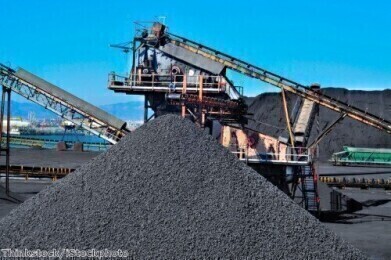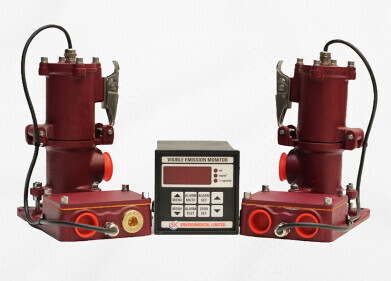Air Monitoring
Could air monitoring in coal mines help to curtail methane?
Aug 03 2023
It should surprise no reader that coal mines are frequently named as one of the primary contributors to the climate crisis – but it may come as a surprise that besides carbon dioxide, they’re one of the world’s worst emitters of methane. Indeed, one study suggested that the methane escaping from these mines worldwide has potentially the same destructive effect on the climate as the total emissions of the global aviation and shipping industries combined. These mines are releasing millions of tonnes of methane into the atmosphere unchecked, thus becoming an invisible catalyst for global warming. This absence of necessary monitoring stems from policy blindness to this mounting environmental hazard, likely due to a lack of comprehensive data on coal mine emissions.
The International Energy Agency (IEA) approximates that close to 40 million tonnes of methane may have been emitted from active and abandoned coal mines last year. This figure paints a worrying picture, as methane is a greenhouse gas far more potent than carbon dioxide in terms of its impact on global warming.
To provide perspective, one tonne of methane can cause the same level of climate change as 30 tonnes of carbon dioxide, making it an urgent issue for climate scientists. When we equate the methane emissions from coal mines using this ratio, it's evident that they correspond to the total emissions of the international aviation and shipping sectors.
The significance of these methane emissions is underscored by their concurrent rise alongside carbon emissions from the global energy industry, which hit a record high in 2018. This trend persists despite the substantial growth of renewable energy in recent years.
The American Geophysical Union's research indicates an urgent need to curb methane emissions to prevent a severe climate crisis, where global temperatures could soar past the 2 degrees Celsius warming target. This urgency is heightened by the revelation that last year's methane emissions increase was the third largest in twenty years, according to data from the US National Oceanic and Atmospheric Administration.
This surge in methane levels contradicts previous theories attributing the increase to biological sources like cattle, wetland destruction, and melting Arctic permafrost. Recent research suggests that coal mines, which have largely evaded stringent regulation due to lack of data, may be a significant part of the problem. Methane, a byproduct of coal extraction, can escape from these mines into the atmosphere.
The global coal industry, Dave Jones from the climate think tank Sandbag argues, has an even greater environmental impact than previously believed and thus requires more robust regulatory measures. Jones advocates for the inclusion of methane leakage in the emissions calculation from coal production, in addition to emissions from coal combustion for electricity generation.
Addressing methane leaks from coal mines, however, presents distinct challenges as compared to mitigating methane pollution from oil and gas industries. The IEA argues that while oil producers can stop methane leaks at zero cost by trapping and selling the gas, capturing emissions from coal mines is technically complex due to the low concentration of methane released by the mines.
Studies of emission reports from American miners and mining industry research in China and India have shown that deeper and older coal seams have higher methane content than shallower and younger ones. When extrapolated to other coal-producing nations, the global magnitude of methane emissions from coal mines becomes clearer.
With its multitude of coal mines, many exceeding 100 meters in depth, China is the primary source of methane emissions. Other significant contributors include Russia, the United States, India, and Australia. There’
A newly published paper in the Journal of Cleaner Production suggests that methane emissions from coal mines could be more than double the previous estimates, surpassing even the oil and gas sectors. The research also stresses that abandoned coal mines continue to emit methane, often overlooked in efforts to curb emissions.
This revelation underscores that our understanding of the total methane emissions from the fossil fuel industry may have been severely underestimated. While oil and gas production has been identified as the main contributors, coal mines, which release 75% more CO2 than gas per energy unit, have often been downplayed, even though they are a significant source of methane.
Methane, once trapped within coal seams, escapes during coal mining operations and is usually vented out through mine ventilation systems for miners' safety. The IEA estimates that about 40 million tonnes of methane are released each year from operational coal mines. Moreover, the contribution of methane emissions from abandoned mines, which often continues for years after their closure, is equally crucial.
Preventing the release of methane from coal mines is a challenge. While about 45% of methane emissions from oil and gas operations could be avoided at no net cost, it's far more difficult with coal mines due to the gas's dilute nature in ventilation air.
The new research points to a clear need for improved data collection on methane emissions from both active and abandoned coal mines. It underlines the fact that methane emissions from coal mines pose a critical challenge in the fight against the climate crisis. We cannot ignore this issue in our global pursuit of reducing greenhouse gas emissions. It's evident that our approach needs to change, and we must consider coal mines in our strategies for reducing methane emissions. Our climate future may depend on it.
Digital Edition
IET 34.2 March 2024
April 2024
Gas Detection - Biogas batch fermentation system for laboratory use with automatic gas analysis in real time Water/Wastewater - Upcycling sensors for sustainable nature management - Prist...
View all digital editions
Events
May 13 2024 Munich, Germany
May 15 2024 Lund, Sweden
May 15 2024 Frankurt-am-Main, Germany
May 20 2024 Columbus, OH, USA
May 21 2024 Lagos, Nigeria


















